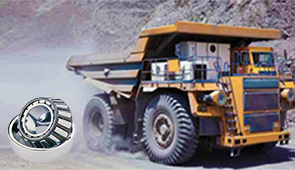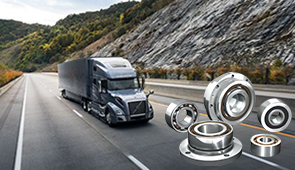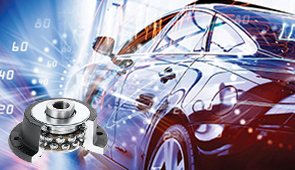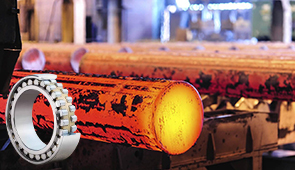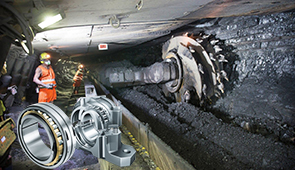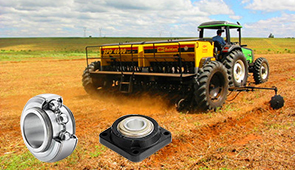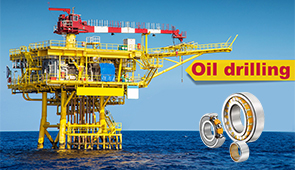Understanding the Role of Rod End Bearings: A Comprehensive Guide
Rod end bearings, also known as heim joints or rose joints, are a critical component in numerous mechanical and industrial applications. These versatile mechanical articulations are designed to manage and transmit forces effectively while allowing for angular movement and misalignment in a wide range of systems. From automotive suspension systems to heavy machinery and precision manufacturing equipment, rod end bearings play a pivotal role in ensuring seamless operation, reduced wear, and enhanced efficiency. This guide aims to provide a detailed exploration of their design, functionality, applications, and selection criteria, offering readers a thorough understanding of their significance in modern engineering practices.
What is a Rod End Bearing and How Does it Work?
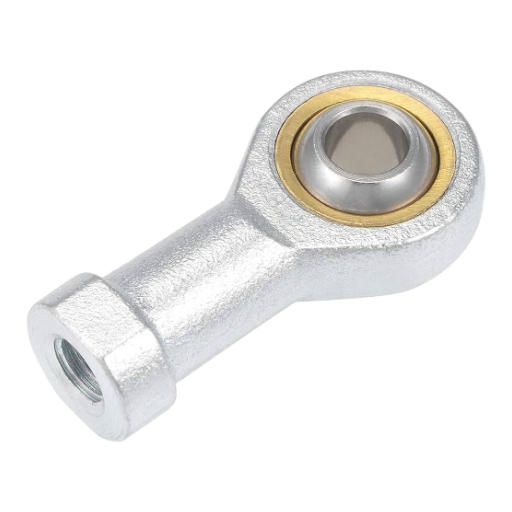
Defining Rod End Bearings and Their Components
Rod end bearings more popularly known as Heim joints or rose joints are mechanical joints that allow controlled movement of two or more articulating components. They are a combination of a threaded shaft and a spherical bearing which is mounted on a housing or a body. The core components are: the outer body (most often made from steel or aluminum for strength and durability), the spherical ball (Which is made from hardened steel or alloy for precision and load-bearing capacity), and the inner race for smooth movement.
- Load Capacity: This is defined by the maximum static and dynamic loads a bearing can support for it to be usable with the application.
- Thread Size: M6 and M10 for instance, as well as imperial measurements, are used for the shaft of the threaded rod; proper alignment is ensured if the components correspond with one another.
- Angle of Misalignment: This refers to the maximum angular motion the bearing can accommodate which usually is between 10° to 30°.
- Material Composition: Determines how well the components withstand wearing, corrosion, and thermal activities over time, therefore affecting longevity in specific environments.
- Lubrication Requirements: To save on maintenance, some variants are self-lubricating while others require manual lubrication.
Having a better understanding of these specifications will help me gauge and see which rod end bearing is best suited for precise engineering applications.
The Functionality of Spherical Bearings
Spherical bearings are mechanical parts meant to serve angular misalignment and rotation motion between the parts of a machine. They accomplish these functions by allowing for multiaxial movement within the housing through their internal spherical surface.
- Load Capacity: Spherical bearings can support radial and axial loads simultaneously, and therefore, can be considered under dynamic forces, which is warranted by their sturdy construct that features hardened steel or other specialized materials to enhance strength.
- Angular Misalignment Tolerance: These types of bearings provide for angular deflection from the basic axis within the range of ±5° to ±15°, therefore, allowing for freedom in intricate assemblies for these models.
- Material Composition: To cope with high loads and speeds without experiencing excessive friction, these parts are usually composed of high-grade alloys or lined with PTFE to dampen the friction and resist wearing.
- Operating Temperature Range: The most typical variants are designed to work within the temperature range of -30°C to +300°C, thus ensuring efficient operation in various conditions.
After analyzing these factors, I can directly establish which spherical bearing would functionally and which techniques satisfy the precisely defined application.
How to Consult Specifications for Tie Rod Ends?
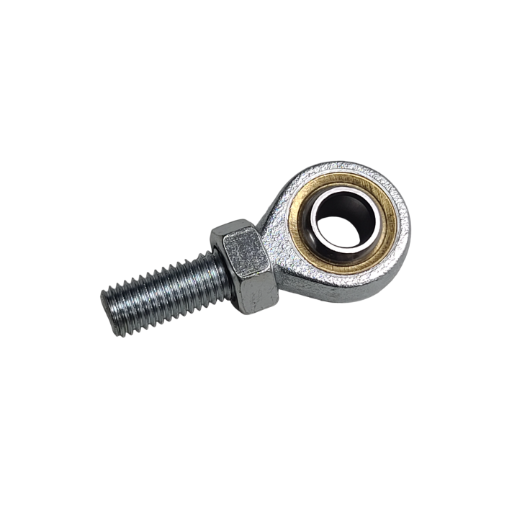
Understanding Thread Types and Sizes
It is important to note the types and sizes of threads when picking or looking over specifications for tie rod ends. My first step is to check the thread type; if it is metric or imperial, as this influences the level of integration with other parts. Metric threads are designated by their pitch, which is the distance between threads measured in millimeters, and follow ISO standards while imperial threads use the more common TPI method to designate the number of threads per inch.
Following this, I check the thread size, which is usually a combination of diameter and pitch (for example, M12 x 1.5 for metric, or 3/8 – 24 UNF for imperial). Regarding tie rods, the commonly used thread diameters that can be classified as a metric range from M6 to M24, while fine or coarse threads can be used to increase load and strength during assembly. For the imperial unit thread, it is also common to see the size of 7/16 – 20 UNF.
I also check that tolerance classes satisfy the needs of the intended application. For instance, in the case of integrating metric threads, the use of 6g/6H features is one example of where the fit of the male thread to the female thread is determined. In the same way for imperial threads, reference grades of 2A for external and 2B for internal threads do the same.
Through this assortment of technical considerations, I can guarantee that the chosen tie rod ends provide ‘fitment’s mechanical reliability, and environmental resistance thoroughly appropriate to the intended use fitment.’
The Importance of Metric Measurements
The importance of accurate metric measurements for engineering and manufacturing processes cannot be stressed enough because it sets the bar for precision. My area of emphasis is on efficiency, consistency, and performance. The rub in these emergencies is millimeter and micrometer measurements because all metric components fit together, errors during assembly are minimized and compliance with international standards such as ISO.
- Thread Fit Classification: With designated metrics like 6g/6H, it is possible to prevent errors during mating threads that directly affect assembly integrity, play or binding in mechanics, and general system functionality.
- Tolerances: These tolerances allow for changes in dimensions but boundaries are set with the aid of the metric system. For example, for critical elements of high-performance machinery like motor vehicles, tight tolerances (±0.005 mm) are always preferred and for less-critical components, larger tolerances are more than enough.
- Surface Finish: Rounding off, the roughness of the surface is described in filters measuring micrometers for example Ra 0.8 micro m helps in correct interfaces of mating parts to ensure friction and durability.
Strict adherence to these factors ensures that the technical requirements and real-life application needs are met.
When Should You Replace Rod End Bearings?
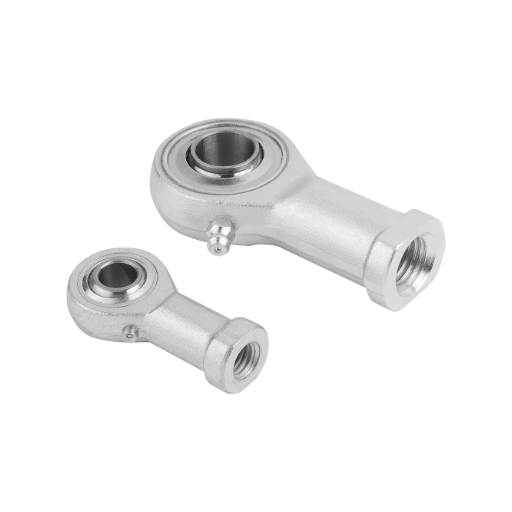
Recognizing the Symptoms of Wear and Tear
Rod End Bearings undergo systematic wear and tear identifiable through increased operational noise, excessive play, and visible cracking or deformation on the structure. Signs of misalignment are more subtle anomalies that I closely monitor since they strongly indicate a loss of bearing structural integrity. Markedly high bearing operating temperatures could be the result of failed lubrication within the joint and is always an indicator of increased wear.
- Radial Clearance: In cases where the tolerance exceeds design specifications, it marks some unusual wear.
- Surface Damage: Frictional wear and tear are also recognizable through pitting or scratch marks on the ball or race material that contains stainless steel or chrome-plated steel.
- Load Capacity: The rated dynamic and static load (10 kN dynamic capacity) is not capable of being supported by the bearing, indicating that the structure is severely compromised and incapable of performance. Immediate attention is then needed.
A systematically accurate and thoroughly evaluated approach is my method to determine when rod end bearings need replacing.
Signs of Corrosion and Dirt Buildup
Deterioration on rod end bearings can be seen as rust, color changes, and loss of material on the surface, especially at the call point like the bearing housing. This occurs due to moisture, chemical interaction, and lubrication deficiency, in addition to rusting stains from added dirt on surfaces. Added dirt is also in the form of debris and other wastes which get deeper and make operations of the bearing more difficult and weaken it with time.
- Surface Roughness: Identify differences in the smoothness of the surface. Moreover, greater roughness than baseline, in terms of Ra > 0.25 µm depending on specifications, is a sign of erosion as well as contamination on surfaces.
- Operational Clearance: Measure axial dimension from inside and radial distance. Loose fittings, more than the standard assumptions pose dirt problems that over time lead to metal wearing and stunted movements.
- Lubricant Analysis: Determine the level of lubrication. The lubricant in consideration can contain as much as 10% more than the standard as dirt can enter unfiltered and react and break down chemically.
Prompt measures will ensure accurate maintenance is achieved in sealing and over time greatly enhancing the operational life of the device.
What are the Different Variants of Rod Ends?
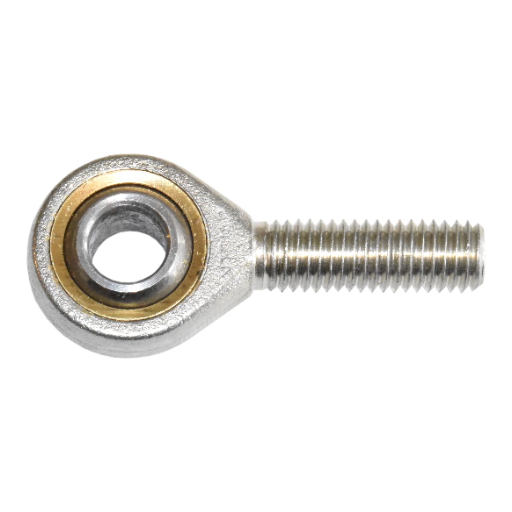
Comparing Heim Joints and Ball Joints
Heim joints and ball joints have differing design features and applications for each specific case, which differ significantly from one another.
- Heim Joints: These mechanical articulating joints are also termed rod ends and consist of a spherical bearing placed within a circular housing. This housing type has male or female threads so that it can be attached easily. Heim joints provide smooth articulation with decreased friction and are perfectly suited for control arms, suspension systems, or linkages. Their application demands a high level of flexibility and angular misalignment. Static and dynamic load ratings (weight bearing capacity) along with angular misalignment and housing material durability (usually stainless steel or aluminum alloys) are essential characteristics for Heim’s joints.
- Ball Joints: The ball stud housed in the socket is defined as the ball joint. The rotational movement along with the angular motion in different directions makes it an essential component of the automotive steering and suspension system. Ball joints can rotate and pivot which assists in better steering control. Providing immense versatility under stress, it is designed to bear high loads with precision. The most important characteristics of the ball joints include load capacity (max), degree range of motion, and the durability of the ball seat, which is usually made of a low-friction polymer or hardened steel.
Both Heim joints and ball joints have unique strengths tailored to their respective domains. Heim’s joints prioritize articulation and flexibility under moderate loads, while ball joints emphasize load-bearing capacity and robust structural integrity in directional control.
Exploring Self-Lubricating Options
For tasks that involve lesser maintenance and continuous efficiency, self-lubricating parts are most useful. These systems use self-contained structures or designs that enable proper lubrication continuously. The most common materials used for self-lubricating joints are PTFE (polytetrafluoroethylene), bronze, and composite materials which considerably reduce friction along with wear and tear.
- Friction Coefficient: Between 0.03 and 0.08 for PTFE-based materials, thus providing smoother motion at critical joints.
- Load Capacity: Self-lubricating materials can provide load capacities that are equivalent to standard components; however, certain capacities can range up to 250 MPa depending on the composition of the material.
- Operating Temperature Range: These self-lubricating parts work efficiently between -200°C to 260°C temperatures, which makes them effective in extreme conditions.
- Durability: Self-lubricating options are designed to reduce the amount of wear and tear that they experience under repetitive motion which ultimately increases their life cycle, particularly effective in low-maintenance or dry systems.
Lower operational and maintenance costs are the greatest advantages obtained from these systems since they do not require additional lubricants. Such qualities increase efficiency and reduce downtime, which increases their desirability in various industries including automotive, aerospace, and industrial manufacturing.
How do Rod Ends Affect Steering and Suspension?
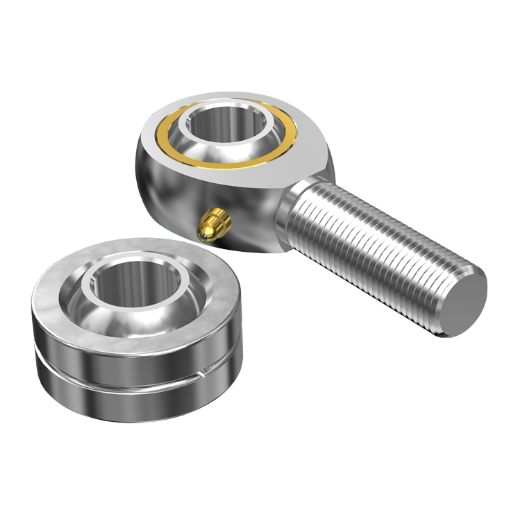
Role in Steering Rack and Steering Wheel Function
The ends of the rod are essential to the operations of the steering rack and the steering wheel because smooth and precise directional movement is possible at these points. In engineering design, they are capable of taking both axial and radial loads in addition to permitting rotation, which is necessary for the movement of steering mechanisms.
- Load Capacity: Assumed sustained vertical (static) loads between 50 kN and 200 kN, proportional to the dimensions and materials of the rod end.
- Motion Range: Capable of accommodating angular misalignments of ±15°, thus enabling flexibility of steering control.
- Wear Resistance: In rod ends of automatic steering gears, self-lubrication makes it possible to lower the friction forces that act on the structure under vigorous oscillatory movements thereby increasing reliability and service life.
- Durability in Operating Conditions: Maintains operational efficiency and reliability at temperature extremes of -50°C to +150°C, variegated temperatures.
These conditions ensure that the rod ends maintain proper steering control, minimal wear and tear of the system parts, and enhanced efficiency of the steering mechanism of the vehicle.
Impact on Suspension and Vehicle Stability
The enhancement of suspension mechanics and vehicle stability is due to the role of rod ends. They transmit forces and angular misalignment at the same time, which preserves the alignment of the suspension’s components. Such precision maximizes the effectiveness of wear and failure mitigation through stress distribution irregularities.
- Force Transmission: The load range of 50 kN to 200 kN makes the rod end capable of managing the forces transmitted through suspension systems, even under demanding operational conditions.
- Angular Flexibility: Rod ends allow for +/- 15 degrees angular misalignment, the flexibility required to adapt to dynamically changing suspensions without putting the structure at risk.
- Operational Durability: They consistently perform at temperatures of -50 degrees Celsius to 150 degrees Celsius, making them ideal for diverse driving environments ranging from extreme cold to high heat.
All these factors help improve the handling, reduce vibrations, and increase the driving comfort which affects the vehicle’s overall reliability and stability.
Frequently Asked Questions (FAQs)
Q: What are rod end bearings and how do they work?
A: Rod end bearings, also known as joint bearings, are a type of mechanical component that allows for angular movement and rotation. They consist of a spherical rod and an inner ring, allowing them to facilitate smooth movement and self-aligning capabilities within a mechanical system. Rod ends are designed to absorb vibrations and are ideal for applications requiring precise movement.
Q: Why is it important to inspect rod end bearings at regular intervals?
A: Regular inspection of rod end bearings is crucial to prevent premature wear and failure. It’s time to check for signs of wear such as knocking or clunking noises, which might indicate that the bearings have become loose or uneven. Consistent inspection helps maintain the performance and longevity of the steering system or other applications utilizing these components.
Q: How can rod end bearings be installed correctly?
A: Proper installation of rod end bearings involves aligning the shank and ensuring the threads are securely fastened. It may need a boot or seal to prevent contamination. It’s important to follow the manufacturer’s guidelines to ensure a correct fit and to facilitate smooth operation even in heavy-duty applications.
Q: What are self-lubricating rod ends and when should they be used?
A: Self-lubricating rod ends are designed to reduce the need for regular maintenance by incorporating materials that provide lubrication throughout their lifespan. These are ideal for applications where regular lubrication is impractical. They are also resistant to corrosion, making them suitable for harsh environments.
Q: How do I know if my rod end bearings are worn out?
A: Signs of worn rod end bearings include unusual noises such as knocking or clunking, increased vibration, and uneven operation. If you notice any of these symptoms, it’s time to conduct a thorough inspection and possibly replace the bearings to avoid further damage to the steering system or other components.
Q: Can rod end bearings vary in size and material?
A: Yes, rod end bearings come in various sizes and materials to suit different applications. They are available in both metric and inch sizes and can be made from materials with different hardness levels, depending on the requirements of the application. Choosing the right size and material will ensure optimal performance and lifespan.
Q: What are the benefits of using corrosion-resistant rod end bearings?
A: Corrosion-resistant rod end bearings are ideal for applications exposed to moisture or harsh environments. They help in preventing rust and degradation, thereby extending the lifespan of the bearings and maintaining the integrity of the system. This is especially important in auto and specialty applications where consistent performance is critical.
Q: How do rod end bearings contribute to the steering system?
A: Rod end bearings play a vital role in the steering system by allowing for precise movement and alignment of the steering knuckle and front wheels. They help absorb vibrations and maintain smooth operation even under heavy stress. Ensuring they are in good condition is essential for safe and effective vehicle handling.
Q: What should I do if I encounter issues with my rod end bearings?
A: If you experience issues such as noise, vibration, or uneven performance, it’s important to inspect to determine the cause. You may need to replace the bearings if they are worn or damaged. For further assistance, you can contact us today for expert advice and support.
UCTH213-40J-300 with Setscrew(inch)
CNSORDERNO: Normal-duty(2)
TOGN: UCTH213-40J-300
SDI: B-R1/8
SD: 2 1/2
UCTH212-39J-300 with Setscrew(inch)
CNSORDERNO: Normal-duty(2)
TOGN: UCTH212-39J-300
SDI: B-R1/8
SD: 2 7/16
UCTH212-38J-300 with Setscrew(inch)
CNSORDERNO: Normal-duty(2)
TOGN: UCTH212-38J-300
SDI: B-R1/8
SD: 2 3/8
UCTH212-36J-300 with Setscrew(inch)
CNSORDERNO: Normal-duty(2)
TOGN: UCTH212-36J-300
SDI: B-R1/8
SD: 2 1/4
UCTH211-35J-300 with Setscrew(inch)
CNSORDERNO: Normal-duty(2)
TOGN: UCTH211-35J-300
SDI: B-R1/8
SD: 2 3/16
UCTH211-34J-300 with Setscrew(inch)
CNSORDERNO: Normal-duty(2)
TOGN: UCTH211-34J-300
SDI: B-R1/8
SD: 2 1/8









